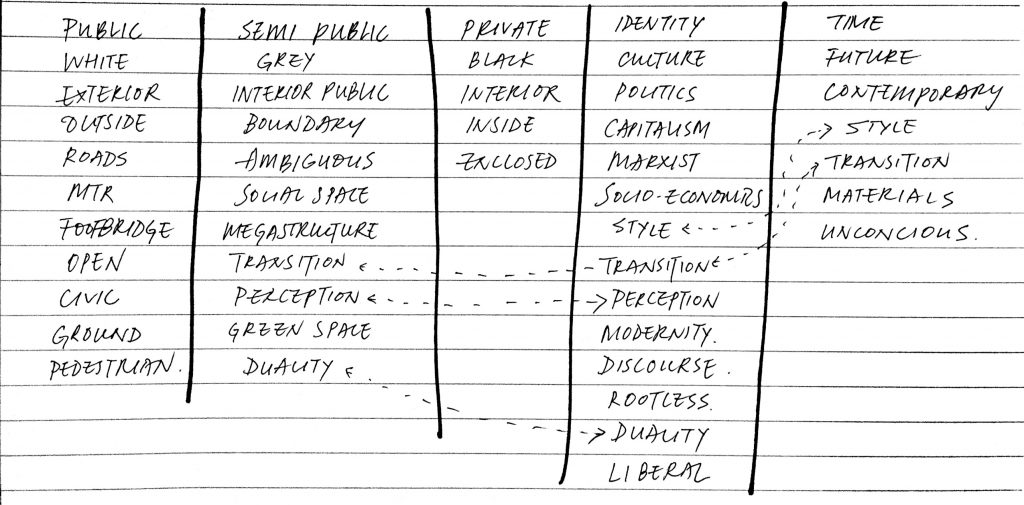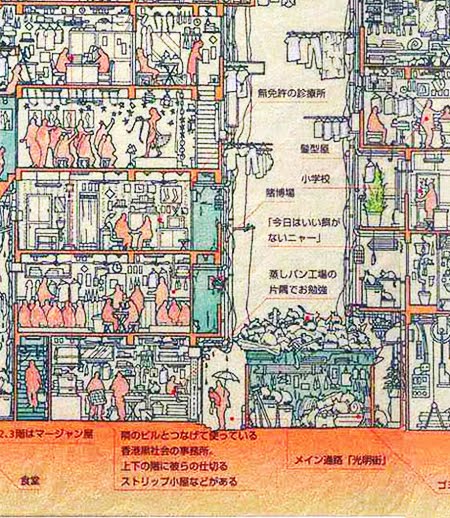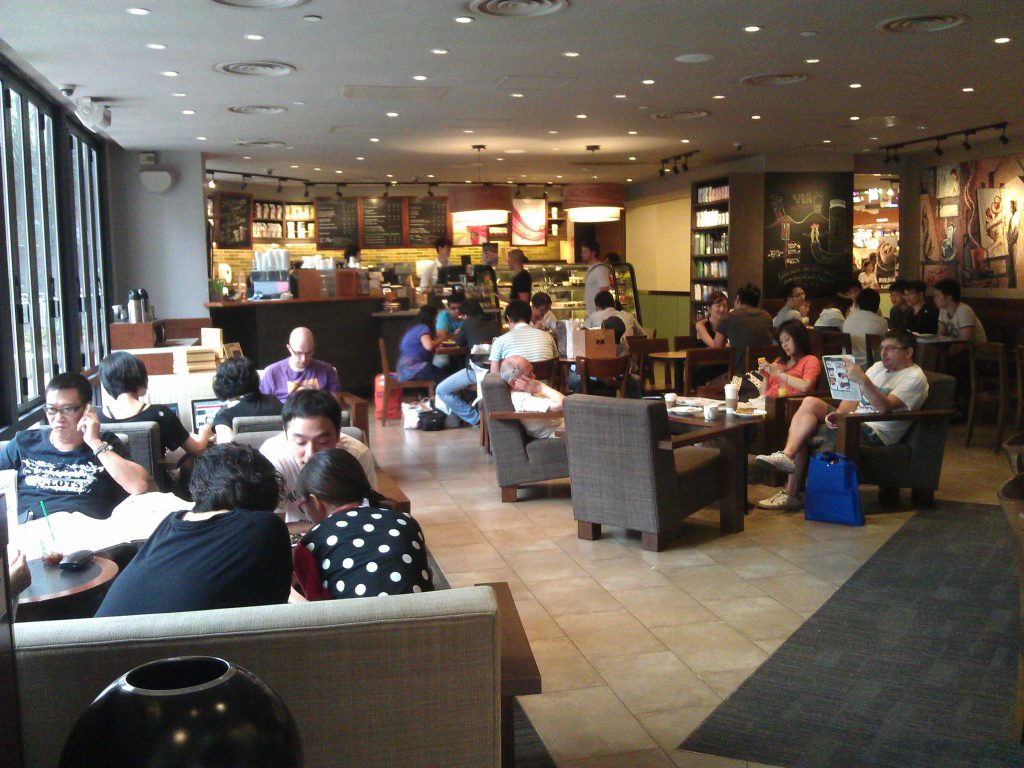|
Definition of the Public Interior
The thesis focuses on scenarios related to public interiors. The definition of Public Interior refers to spatially enclosed environments which are experienced as a part to the public realm. In this definition, public interiors includes space inside civic buildings and institutions (healthcare, education etc.) An extensive definition of public interior spaces includes spaces in civil society that is also experienced as such. These places are nodes for socialising, entertainment, leisure, transit and transport.
Choice and comfort
The difference between these public interiors and civic buildings are based on the user’s subconsciousness. For public interiors, people choose to become users. Therefore, convenience, pleasure, comfort, recognition and curiosity are fundamental concerns. These environment were chosen because they fulfil a certain need or the atmosphere relates to them with their identities or lifestyles. Therefore, Public interior ties closely and reflects culture, identities, economic and demographic that are subjective to time and life patterns.
Using spaces with these qualities in Hong Kong as a case study, this thesis aims to address these contemporary scenarios with an examination of the history, cultural associations, and before and after colonisation; as political aspect that gear the progression of public interior space in architecture in Hong Kong. More specifically, this thesis examines how theories of identity issue, globalisation and place-making can expand upon the influence of architecture and design.
Brainstorm of keywords that are related to my thesis topic: –

Arranging the keywords into clusters:

Historical reference
1) Early signs of the emergence of new, public sphere interior was in the early nineteenth century onwards from shopping arcades, exhibition halls, museums, railway stations to department stores. The “modern” programs could be viewed as a form of “anti-domesticity”.
Those pedestrian-focused aalleywaysallowed flâneurs, and later flâneuses as well, to wander without the discomforts that had hitherto been created by horse-drawn carriages, crowds, dust and mud. Dining and drinking, bathing in public baths, playing billiards, attending the theatre and prostitution were also undertaken in those new inside/outside spaces. (Sparke, P, The Modern Interior, P.114)
Coney Island -> subconsciousness
Benjamin described them as ‘a city, a world in miniature’
2) Kowloon walled city: The ambiguity between inside and outside, where one’s roof is another man’s walkway, truly a city, a world in miniature.
 Kowloon walled city
Contemporary context
As the public interior spaces are transformed from shopping arcades, in the theoretical discourse these spaces have been identified an “economy of experience” which they address potential users as consumers. Although capitalism is inevitable in the discussion, the scope of my investigation would remain focused among socio cultural, economic and political contexts. This focused view allows a more critical research and analysis of the social and political dimensions that are reflected in the architectural design of public interiors.
Project
The research will focus on spaces for sociability and culture, as exemplified by the evolution of public (plazas/public parks), semi-public (privately owned public space), privatization of public roads during umbrella movement, non-place (green space: grass that people cannot step onto…) or anti-domestic places such as karaoke/bars/cafes and restaurants into places of social display and informal association. The research will be a combination of analysis of architectural, functional, and cultural response, to a type of public interiors and the representation of local identity.
 Coffee shops: sofa and coffee tables in cafe inject domestic living in public
Hong Kong Culture and Architecture
One of the response to this topic is Ackbar Abbas’s Hong Kong: Culture and the Politics of Disappearance (1997). His examines Hong Kong as a city whose identity eludes any easily defined category. Hong Kong People are not British, nor are culturally and politically identical to Chinese mainlanders; they are Abbas comments, ‘a bird of a different feather, perhaps a kind of Maltese Falcon’. He continued on elaborating that Hong Kong’s celebrated vitality has a “decadent” quality, that is the motive is channeled into one direction: primarily economics; while people’s aspiration (for political independence) are blocked, the citizens belief that they can shape their own history by takes into other forms such as: by owning properties or speculating stock market; or being obsessed with fashion or consumerism. Hong Kong citizens tend to think of culture as an imported commodity, hence Abbas speculates Hong Kong, who does not have its own culture, to a culture of disappearance.
The thesis seeks to look further into the “culture” and identity in Hong Kong, on the political aspect that gear the progression of public interior space in architecture in Hong Kong. The project would be of a program that is relevant to the research which is yet to be discovered. The fundamentals are crucial to understand what constitutes to the perception of architecture and space. Architecture cannot solve social problems, but it can control perceptions of a space. However a possible project would be a re-think of the West Kowloon Cultural District. The nature of the project could flavor the growth of local culture rather than representing the hub as an imported commodity. The project could be designed as a future building in 2047, but in the form of a monument of current model, as a future memorial building of the present age.
Readings:
Delirious New York – Rem Koolhaas
Hong Kong: Culture and the Politics of Disappearance – Ackbar Abbas
Arcade Project – Walter Benjamin
The Project of Autonomy: Politics within andagainst Capitalism – Pier Vittorio Aureli
Learning from Las Vegas – Robert Venturi
|



